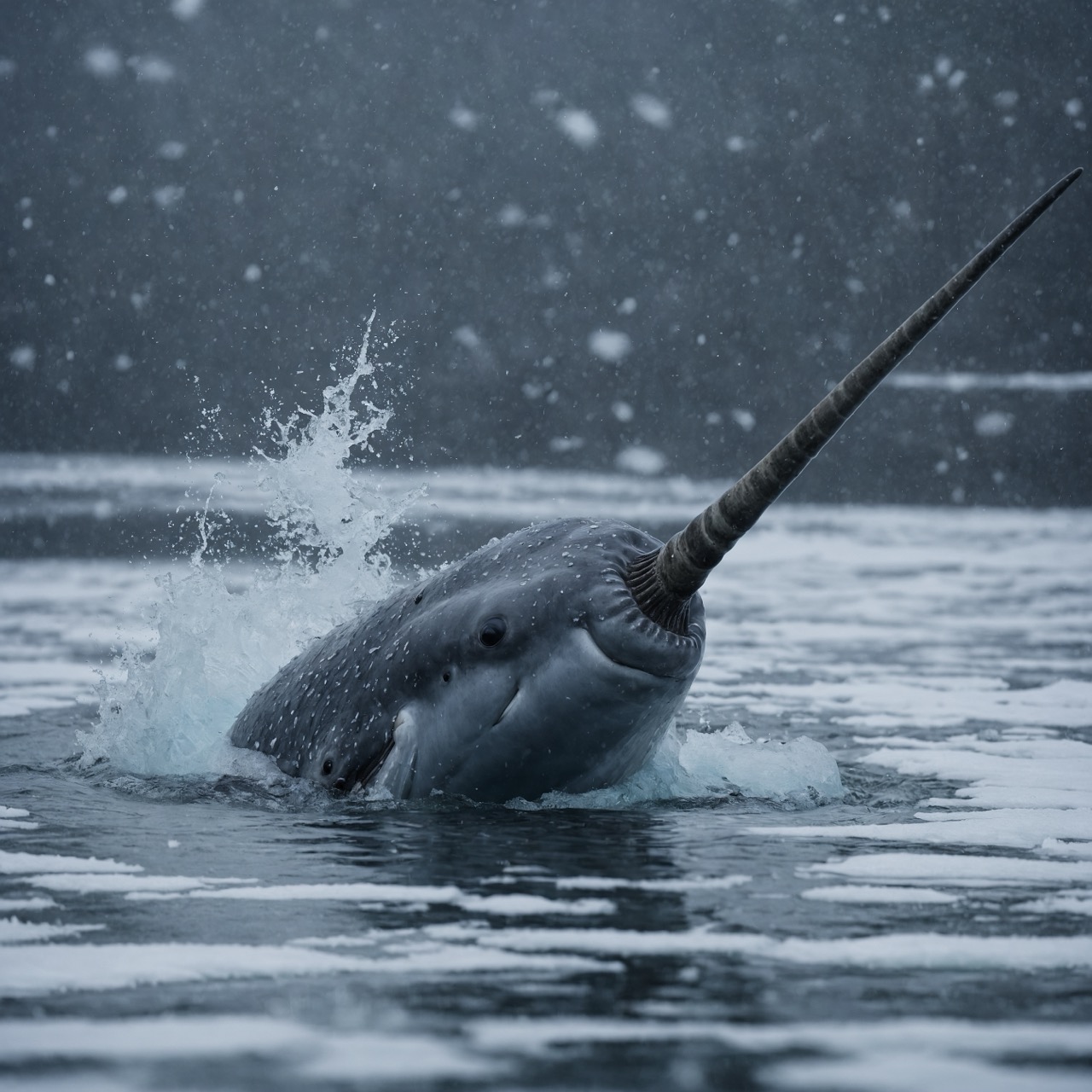Deep in the icy waters of the Arctic, the narwhal (Monodon monoceros), often referred to as the “unicorn of the sea,” continues to captivate and mystify scientists and nature lovers alike. This remarkable cetacean is famous for its long, spiral tusk, an evolutionary marvel that has inspired myriad legends and scientific studies. The narwhal’s unique adaptations to the Arctic environment and its role in marine ecosystems make it a key species for understanding biodiversity and the impacts of climate change in polar regions.
Characteristics / Physical Description
Narwhals are medium-sized toothed whales, with males typically ranging from 13 to 20 feet in length, and females slightly smaller. The most striking feature of the narwhal is undoubtedly its tusk, which is actually an elongated upper left canine tooth that can grow up to 10 feet long. This tusk is not just a passive tool; it is richly innervated and thought to play a role in sensory perception and social interactions. Narwhals have a mottled gray pattern over most of their bodies, with white undersides, and they lack a dorsal fin—a common adaptation among ice-dwelling marine mammals.
Taxonomy and Classification
Narwhals belong to the family Monodontidae, which also includes the beluga whale. They are closely related to other toothed whales within the order Cetacea. Despite their mythical aura and distinctive appearance, narwhals are one of only two species in their family, highlighting a relatively constrained evolutionary lineage.
Behavior and Social Structure
Narwhals are social creatures, often found in groups that can number from a few individuals to several hundred. These groups are sometimes segregated by sex and age, and they are believed to play critical roles in foraging and protection from predators like orcas. The tusk serves as a status symbol in males, used in jousting behaviors that likely determine social hierarchy.
Habitat and Distribution
Narwhals inhabit the cold waters of the Arctic, particularly around Canada, Greenland, Norway, and Russia. They are ice-dependent animals, often found near dense pack ice and lead systems, which are dynamic regions of open water surrounded by ice. These environments are crucial for their survival, providing protection and access to their prey.
Diet and Feeding Habits
The diet of narwhals is comprised mainly of benthic and pelagic fish, squid, and shrimp. They dive deep to find food, often reaching depths of over 800 meters. The narwhal’s tusk might play a role in detecting the salinity of water, which could help in locating prey in the varied and complex Arctic waters.
Breeding and Reproduction
Narwhals have a gestation period of around 14 months, with females giving birth to a single calf. Calving occurs every three to four years, typically in secluded, ice-covered waters to avoid predators. The calves are nurtured and protected within the pod, learning necessary survival skills from their mothers and other pod members.
Relationship with Humans
Historically, narwhals have been hunted by indigenous peoples in the Arctic for their meat, skin, and tusks, the latter being highly prized for their ivory. Today, narwhals face threats from climate change, which is altering their icy habitat, and increased human activity in the Arctic, including shipping and oil and gas exploration. Conservation efforts are crucial to ensure that these mystical creatures do not vanish, becoming legends themselves.
Evolutionary History
Narwhals have a relatively limited fossil record, but genetic studies suggest that they diverged from belugas around 5.5 million years ago. Their evolutionary path seems closely tied to the dynamic and challenging conditions of the Arctic environment, driving the development of their specialized sensory and diving capabilities.
Use as Research Animals
Due to their unique adaptations and sensitivity to environmental changes, narwhals are important subjects in marine research. Studies focusing on their tusk’s sensory functions, diving physiology, and social structures are vital in understanding more about marine mammal adaptation and the overall health of Arctic ecosystems.

